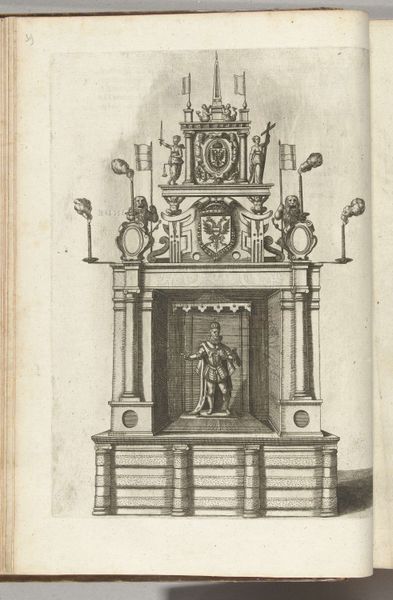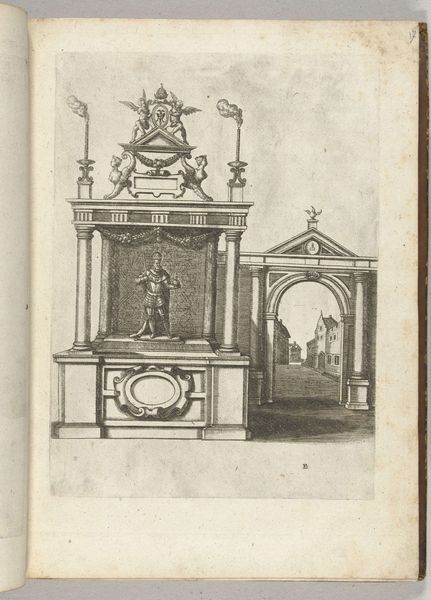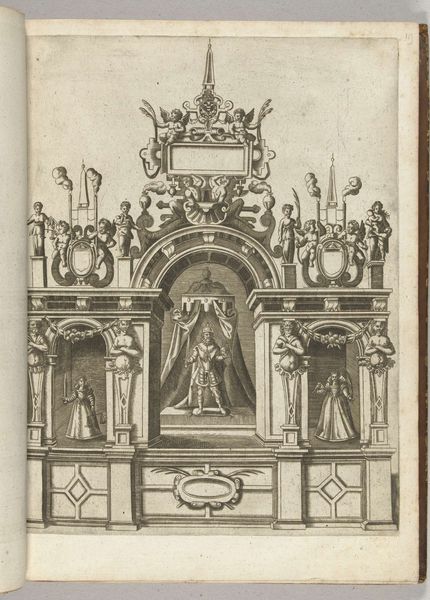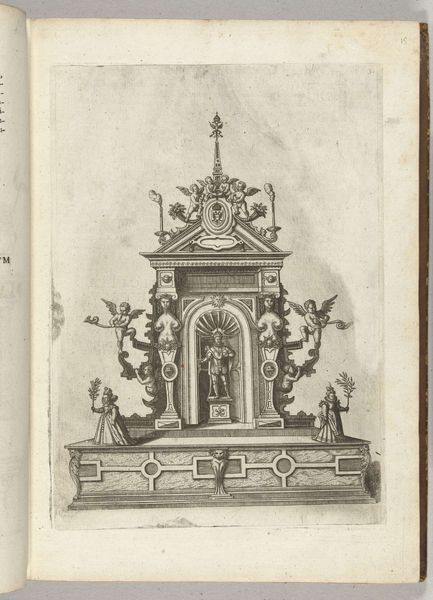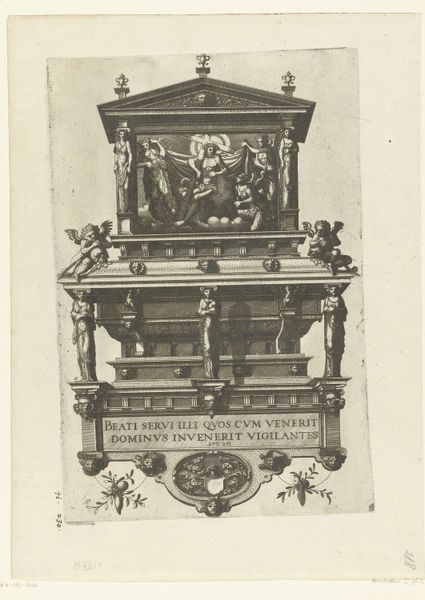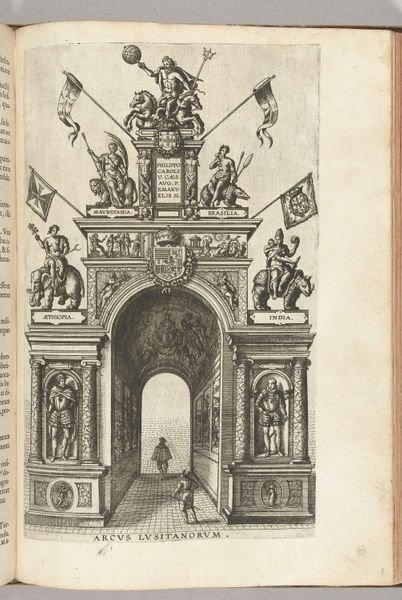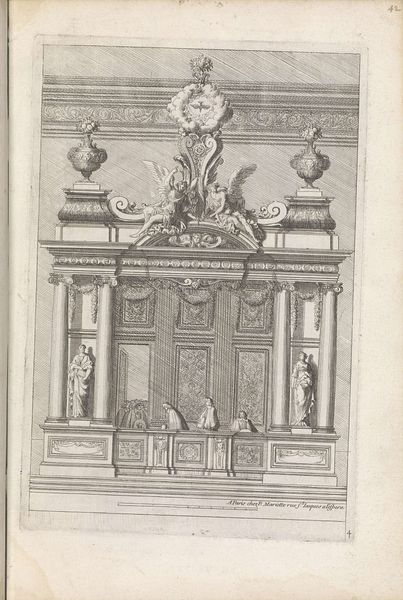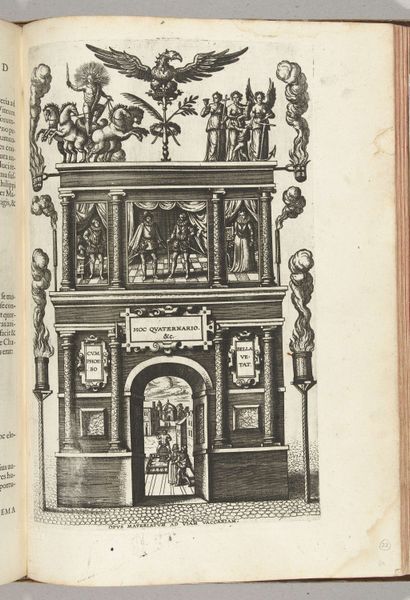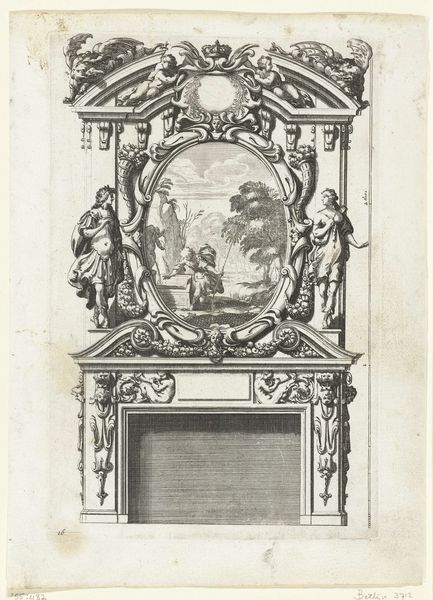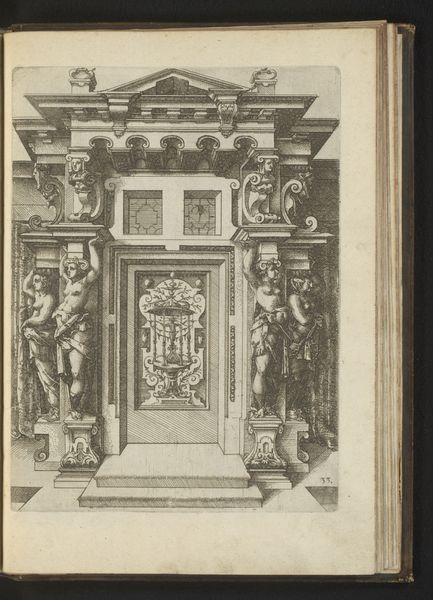
print, engraving, architecture
#
portrait
# print
#
11_renaissance
#
history-painting
#
academic-art
#
engraving
#
architecture
Dimensions: height 315 mm, width 225 mm
Copyright: Rijks Museum: Open Domain
Editor: Here we have "Toneel met keizer Rudolf II," a print from 1594 currently housed at the Rijksmuseum, and created by an anonymous artist. The engraving depicts Emperor Rudolf II standing within a sort of architectural stage. The meticulous detail and sharp contrasts in this print really emphasize the formality of the subject. What draws your eye in terms of composition and technique? Curator: Certainly, the engraving's composition reveals a carefully constructed hierarchy through spatial arrangement and line quality. Note the central placement of Rudolf II, framed within the proscenium of the stage. The engraver’s control is evident in the varied line weights; finer, more delicate lines render the cherubic figures atop the structure, while bolder strokes define the Emperor’s armor, creating a visually commanding presence. Editor: It's interesting how the print uses the architectural framework to highlight Rudolf. Does the structure itself have a significance beyond just framing the Emperor? Curator: Indeed. The architectural structure acts as a visual metaphor. Observe the use of classical elements - columns, arches, statuary. The integration of these design tropes emphasizes ideals of imperial authority and Renaissance humanism through an adaptation of idealized classical structure, inviting considerations of permanence and stability to solidify Rudolf’s image. Editor: I see what you mean about how the print balances precision and symbolism to represent the Emperor's power. Thank you! Curator: My pleasure. Considering visual devices such as these expands our understanding beyond historical record, providing insights into the intentional design and artistry influencing the original audience’s perception.
Comments
No comments
Be the first to comment and join the conversation on the ultimate creative platform.
